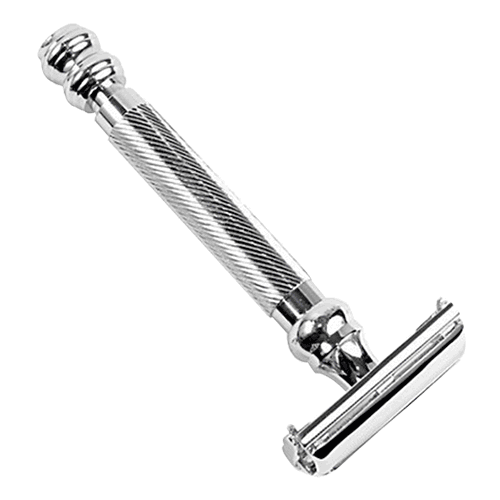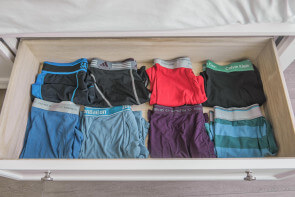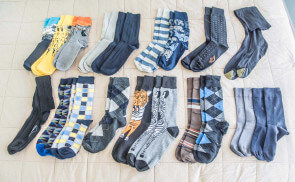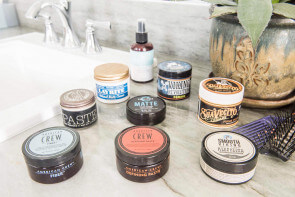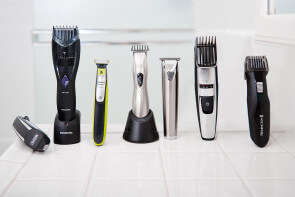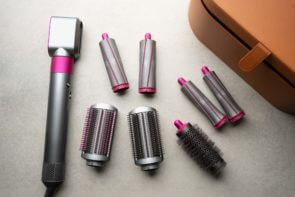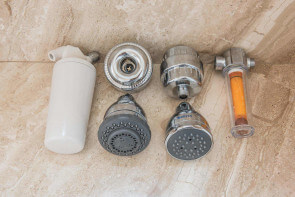
The Best Safety Razors
During nearly two months of researching, testing, and even dreaming about double-edge safety razors, we asked five different testers to put their faces on the line with each of the seven best products available to discover the Parker – 99R was the best safety razor for the money. The Parker – 99R earned high marks for easy maneuvering, blade loading, construction material, and all-around shaving comfort. The Viking – Chieftain came in a close runner-up.
During nearly two months of researching, testing, and even dreaming about double-edge safety razors, we asked five different testers to put their faces on the line with each of the seven best products available to discover the Parker – 99R was the best safety razor for the money. The Parker – 99R earned high marks for easy maneuvering, blade loading, construction material, and all-around shaving comfort. The Viking – Chieftain came in a close runner-up.
Table of contents
- The 7 safety razors we tested
- Best overall: Parker – 99R
- Also great: Viking – Chieftain
- Best three-piece option: Edwin Jagger – DE89
- Other products we tested
- How we selected
- How we tested
- What is a safety razor?
- Important features to consider
- The bottom line
The 7 safety razors we tested
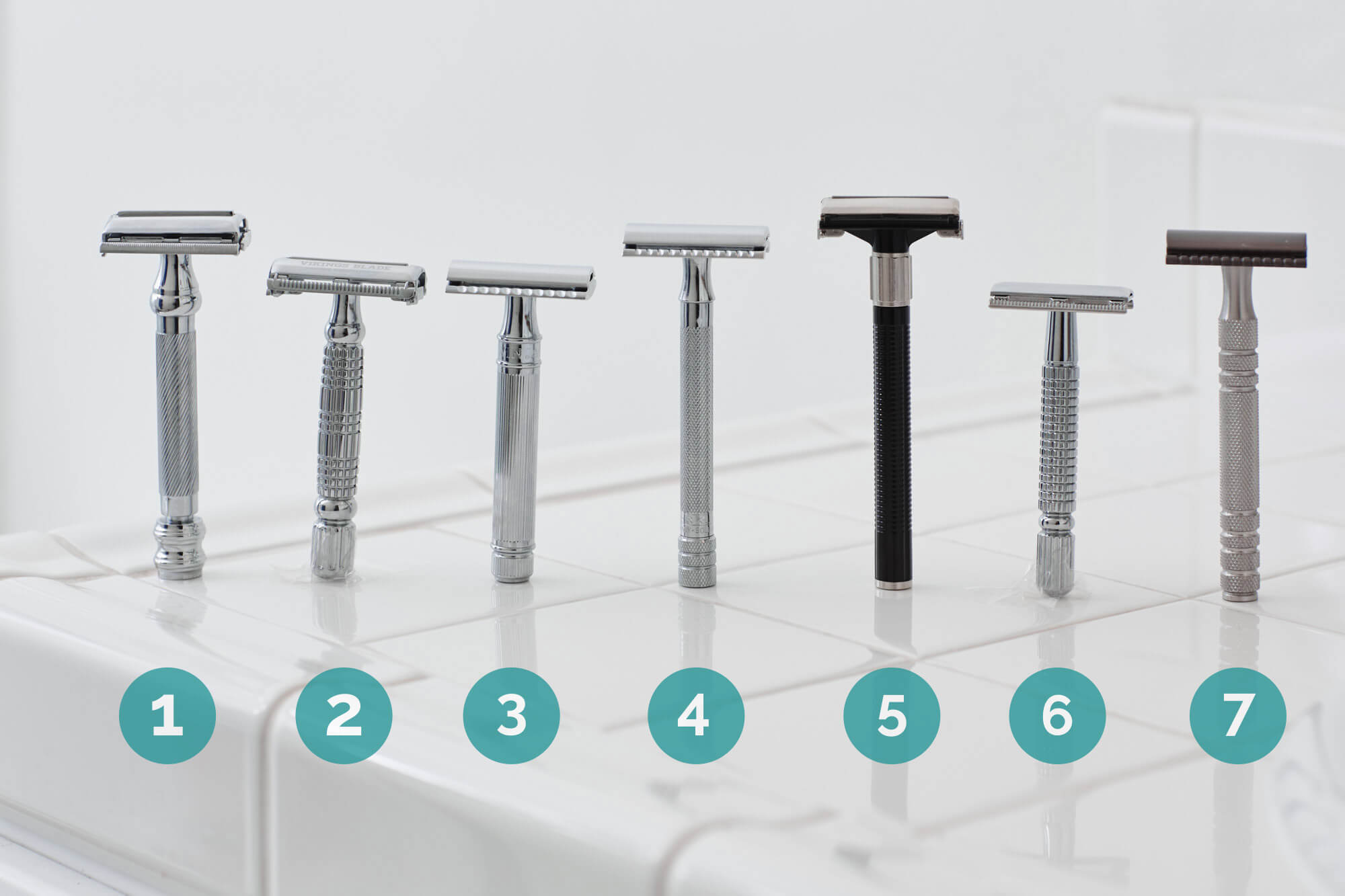
| Product | Price | Handle Length (inches) | Blade Gap (mm) | Blade Aggressiveness (1 is mild) | Materials |
|---|---|---|---|---|---|
| 1. Parker – 99R | $$$ | 4 | 0.89 | 1/5 | Brass frame, chrome-plated |
| 2. Viking – Chieftain | $$$ | 3 | 1.04 | 1/5 | Polished chrome |
| 3. Edwin Jagger – DE89 | $$ | 3.7 | 0.65 | 3/5 | Polished chrome |
| 4. Merkur – MK 23C | $$ | 4 | 0.64 | 2/5 | Polished chrome |
| 5. Feather – Popular | $ | 3.5 | 0.61 | 1/5 | Synthetic plastic, stainless steel, chrome-plated brass |
| 6. Baili – BT171 (Tech Clone) | $ | 3.5 | 1.12 | 4/5 | Polished chrome |
| 7. Maggard – MR7 | $$ | 3.85 | 0.89 | 5/5 | Stainless steel (handle); zinc alloy, chrome (head) |
Best overall: Parker – 99R
Smooth and substantial to hold, easy to use, and a tremendous all-around value, the Parker – 99R scored very well with both the most experienced shavers and the tester who has been using electric razors for years. Parker may not have been one of the original trailblazers in the space, but the 99R model has perfected the twist-to-open style with an eye-appealing design and materials that feel built to last. The 99R’s blade gap is even on the aggressive side, though that doesn’t stop it from delivering a comfortable, close shave.
Design
The Gillette SuperSpeed is generally considered the prototypical butterfly-open safety razor, a model that was very popular in the years before disposable cartridges took over. Four decades after the SuperSpeed was in its heyday, the Parker 99R carries on the torch with a 4-inch chrome-plated handle, spiral knurl grip, and a weighty design meant to do the heavy-lifting portion of your shaving routine.
Elegant and sharp to look at, but not over-designed, the 99R also has a lightly ribbed (microcombed) straight safety bar and one of the thicker handles that you’ll find on a safety razor. Though the blade gap of 0.89 was more aggressive than most of the other test razors in the group, all five testers found it natural to maneuver and ended up with minimal nicks and cuts. The girth and weight of the handle also yielded a point of balance much closer to the center than is typical, making some of the slender-handled models feel somewhat flimsy by comparison.
The features that testers loved
With its simple twist-to-open knob at the handle base and standard butterfly open, the Parker was clearly going to be in the running for easiest to load, and it more than lived up to the billing with the highest score in this category. A surprising find? Testers found that it cleaned very easily, a feature that twist-to-open one-piece razors are definitely not known for. While this could change over the longer haul as the shaves begin to pile up, it’s a great sign that cleaning the head isn’t the problem that some butterfly opens tend to have.
Thanks to its bulkier design, it also might be easy to anticipate a few problems in terms of overall maneuverability, yet this turned out not to be a problem for testers. The long handle and central point of balance combined to create an easy shaving angle that made it one of the top performers in maneuverability; only the Viking – Chieftain scored as high, matching the 99R with a 4.2 out of five.
Although it was right in the middle of the pack for shaving closeness, the convenience factor and the overall shave elevated it to the top of the list for three out of the five testers. It was also the only tested razor to avoid an overall satisfaction rating of lower than four and wasn’t named by any of the testers as the least favorite of the group.
At face value, the Parker 99R is the razor equivalent of a moderately priced sedan, built to get the kids to soccer practice and back home again without the frequent trips to the mechanic. In action, however, the 99R proves that it has much more under the hood than it does on the surface, providing a user-friendly and luxurious shaving experience that is easy to appreciate no matter your shaving background.
Key takeaways:
- The Parker – 99R may seem aggressive with its 0.89 blade gap, but its limited blade exposure and heavyweight design make for an incredibly easy shave while still getting close.
- Thanks to its simple twist-to-open design and sturdy materials, blade-changing is as fast and easy as possible with a safety razor.
- Unlike some other one-piece, butterfly razors, cleaning the 99R isn’t problematic.
Also great: Viking – Chieftain
Don’t let the name of the Viking – Chieftain fool you. Though it may sound harsh and menacing, it is more of a mild-mannered charmer than the bane of a civilization. With its microcomb system embedded in its safety bar, the one-piece Chieftain is designed to placate irritable skin while still providing a close shave with its limited blade exposure.
Our razor collector friends tell us this is one of many clones of the classic Gillette – SuperSpeed, probably made by Baili as the BD17 and re-packaged with the custom travel case. The polished 3-inch chrome handle and knurled grip make it look slightly like a Viking axe ready for battle, though 18 months after we tested this group it’s now easy to find this same design under different names if you look. An updated version of the Chieftain has a new nameplate on the bottom of the head, but as far as we can tell none of the important design geometry has changed.
Designed for convenience at home or on the go, the Chieftain delivers a smooth shaving experience complete with easy blade loading and just enough aggression to satisfy shaving enthusiasts.
Much more important than the aesthetics, however, the Chieftain performed extremely well in the key categories. Although the butterfly open was a touch flimsier than the brass-bodied Parker – 99R, the Chieftain was still a cinch to load and was as easy to maneuver as any razor in the group. The Chieftain scored the highest in the group in closeness, left the least number of cuts and nicks and finished just behind the Parker in overall satisfaction, showcasing its combination of convenience and comfort that put it in the running for the top razor.
The Chieftain even came with a nice little bonus: a surprisingly effective case that accompanies most purchases and highlights the razor’s versatility as both an everyday option and travel companion. Although packaging won’t make it shave better, The Chieftain’s practical and elegant leatherette travel case works perfectly with its shorter handle and could slide into a work or travel bag without you even knowing it’s there.
Key takeaways:
- The Viking – Chieftain makes it easy to get a close shave, without the nicks of a more aggressive razor, making it a natural fit for first-timers.
- Very high convenience and versatility factor. Like most twist-to-open razors, changing blades is lightning fast and the complimentary case is a nice add-on that makes it ideal for traveling.
- Easy to maneuver for all safety razor experience levels despite the relatively short three-inch handle and ostensibly aggressive 1.04 blade gap.
Best three-piece option: Edwin Jagger – DE89
The name Edwin Jagger – DE89 tends to command respect in the world of double-edge safety razors, and the DE89 certainly points to the reasons why that holds true. The Edwin Jagger’s 3.7-inch handle is a manageable length, the construction material (polished chrome over brass) convinced testers it was high quality, and it demonstrated a nice balance between comfort and aggressiveness. Although lighter than the Parker, the EJ’s handle is just as thick as its counterpart and shows off an attractive, vertically-knurled grip that contributes to its overall classic look.
Even though it has a blade gap on the mild side, the DE89 slightly topped the Parker – 99R in shave closeness and scored higher in ease of blade-loading than the other multi-piece razors that we tested. Still, we were left unconvinced that it would truly make the best safety razor for beginners despite the company’s own marketing efforts. Thanks to middle-of-the-road maneuverability, a unique handle length and more difficulty loading than the top butterfly models, beginners might be better off going for an option centered more on pure convenience. But even with a less than ideal starting point for safety razor rookies, the Edwin Jagger – DE89 is a very good all-around razor.
Key takeaways:
- High-quality material and a comfortable all-around shave make the Edwin Jagger – DE89 a great long-term shaving option.
- Easy to get a close shave despite a minimal blade gap/exposure and overall mild feel.
- Ergonomic, but classy design make for a razor that is as eye-appealing as it is effective.
Other products we tested

Feather – Popular
Not to discriminate against the synthetic plastic safety razors, we also tested the Feather – Popular, a generally well-liked and inexpensive butterfly model that failed to make much of a connection with testers. Without the classic look of its more substantial metal counterparts or the pure convenience of a cartridge razor, the Feather simply had a rough comparison with the best models in the price range. In a vacuum, however, the Feather would probably get a chance to shine brighter thanks to its easy-to-load head, decent maneuverability, and unbeatable price tag (typically under $20).
Baili – BT171
While the Merkur 23C held its own next to the competition, the Baili – BT171 missed the mark despite showing flashes of potential. More than anything, the Baili proved difficult to tame, as three different testers reported at least three nicks/cuts. This is a modern clone of a classic Gillette – Tech, and it’s a razor that works well for a lot of people, but takes some practice. No other razor had more than one tester who ended up with at least three different nicks or cuts not attributed to user error. Where it did score fairly well, however, was the construction material (another polished chrome finish) and in closeness of shave, even though testers paid for their smooth faces with a bit of bloodshed.
This model from Baili shows up under a variety of names if you look around for it, and our original test was of a popular but now-disappeared Amazon brand called “Smoothere.” The travel case with its tiny shaving mirror is, we have to admit, a nice touch. You can also find versions of this razor sold by boutique shaving shops, sometimes with different handles like the DE1 from The Italian Barber.
Maggard – MR7
The Maggard – MR7, is a unique safety razor that comes with a few different head choices. Looking to pick a head on the aggressive side, we went with the V3A, a zinc alloy, chrome-plated head with a (scalloped) close-combed safety bar that yielded an aggressive shave not to be taken lightly. Though the Maggard had no problem getting a very close shave, even the testers used to aggressive heads saw an uptick in cuts while greenhorns found it nearly impossible to use.
Having said that, the Maggard – MR7 is still a highly respected razor that could still be a great option for intermediate or expert shavers, though even veteran safety razor users could have a learning curve with the aggressiveness of the V3A head. Other head options that might be better suited to warm shavers up to the Maggard – MR7 include the open-combed V2 and the standard version of the V3.
How we selected
Starting with the safety razors that carried the most praise on Amazon, we sifted through the thousands of subreddit comments in /r/wicked_edge along with user reviews on forum communities like Badger and Blade and The Shave Den. We followed YouTube vlogs and reviews from sites like Sharpologist, pointing us toward the integral features of the best (or best-liked) models. While aesthetics were a nice bonus, the essential features of a top-rated razor included balance, maneuverability, easy blade loading, and just the right amount of aggression.
Looking at those reviews, we also hunted for a spread of different safety razors, avoiding some popular razors too similar to other well-reviewed models that made the final cut. Since price and overall value were also consistent themes, we focused on razors under $40 with at least 500 mostly positive reviews from credible vendors.
Updates
In the two years since we tested our first set of razors, there have been dozens of new start-up razor companies releasing new safety razor designs. For the most part, the designs are similar: three-piece razors still mimic either the Gillette – Tech or classic Merkur head, while twist-to-open razors still resemble the classic Gillette – Super Speed. For the most part, the big change in the market is that there are more places to buy similar razors, not that the razors have changed dramatically.
The biggest change has been in materials, with companies like Edwin Jagger releasing luxury-class stainless steel versions of their tried-and-true designs that used to be available only in chrome-plated zinc alloy. Italian Barber is, as always, stirring up trouble with a line of precision-machined razors that has seen eight iterations in just a few years. We’ll wait for that merry-go-round to stop before we commit to reviewing higher-tier razors.
How we tested
Our group of five testers started with their normal razors, giving us a chance to see what they liked about their own razors before moving on to the test group. To make sure the group started on the same page, testers were encouraged to shower before each shave, one of the recommended ways to properly prime hair and skin. Testers were instructed to continue using shaving products they were accustomed to so skin irritation from a new shaving cream additive wouldn’t affect results.
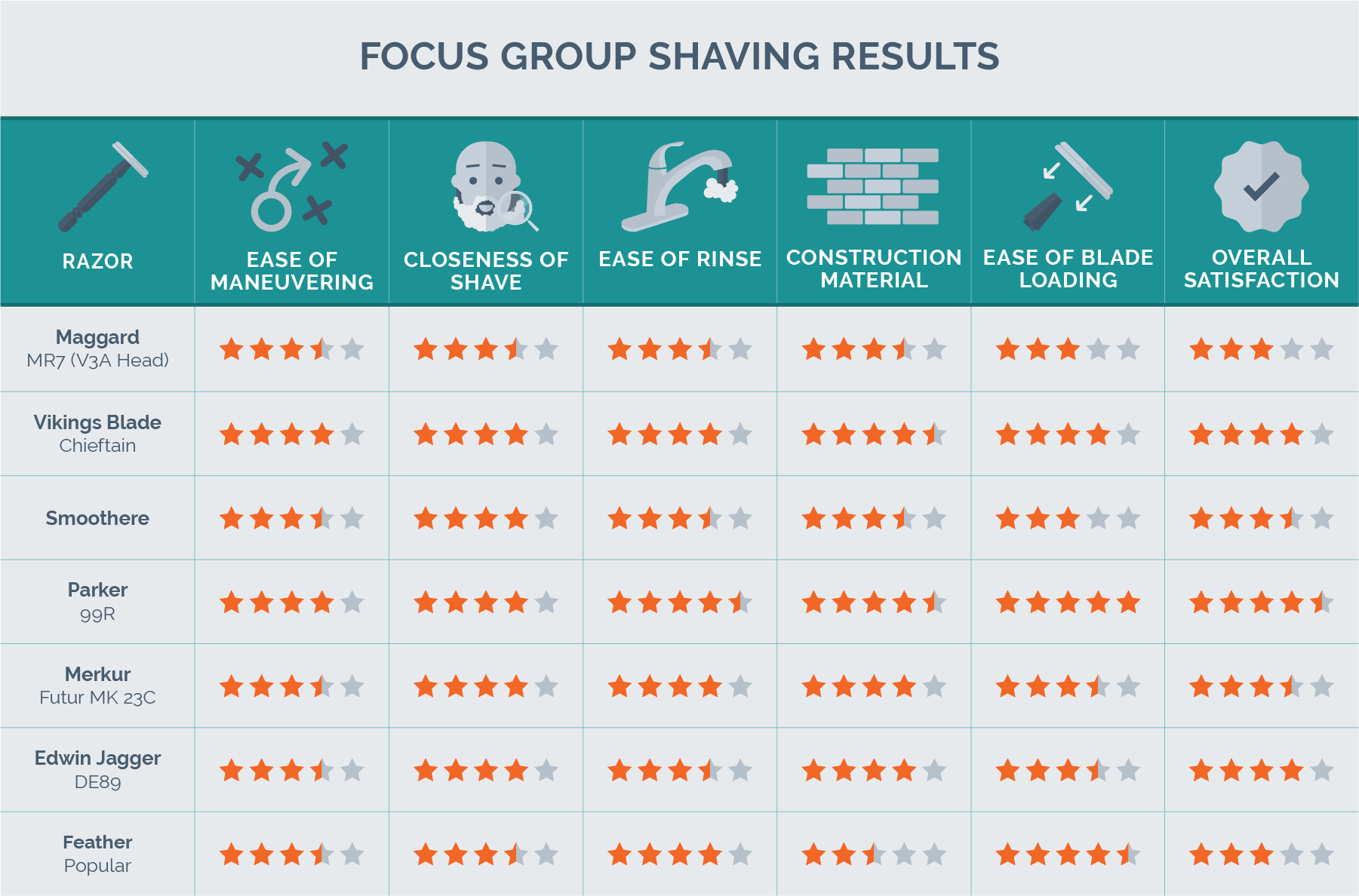
Each test razor was then loaded solely with Voskhod Teflon-coated blades, which fit every standard double-edge razor and can be purchased inexpensively in hundred-packs. Testers used each razor five times at their normal rate of shaving, rating the razors from 0-5 in a range of different categories: ease of maneuvering, closeness of shave, blade loading, ease of rinse, construction material, and overall satisfaction. Each tester was also asked to check their pride and keep track of any nicks/cuts not attributable to user error, finishing each razor by jotting down a detailed description of their experience.
After the test period was over, each tester looked through their results and came up with their favorite razor as well as their runner-up and least favorite. By breaking down the individual scores for each category compared with the macro views of the testers, we were then able to determine the razors that best held up during the process and performed the best.
Why a safety razor?
Beneath the carefully crafted designs and methodology of the best razors, shavers tend to come back to a quintessential question: what’s the fastest and most effective way to shave without bloodshed? While cartridge razors are very popular options for wet shaving — balancing attractive upfront prices with exceptional ease of use — they also have a reputation for using lower-quality steel blades that can make it difficult to get a truly close shave. Straight razors have also had somewhat of a renaissance, allowing users the possibility of a simple and very close shave, but they’re notoriously difficult to get accustomed to for someone who normally uses either a cartridge or electric razor.
Enter the safety razor, which offers the best of both worlds. Safety razors still showcase the features that King C. Gillette envisioned when his first double-edge safety razors launched near the onset of the 20th century. These days, the impressive variety of safety razors gives shavers plenty of options while searching for the perfect shave, tapping into centuries-old tradition but also allowing countless opportunities for customization. It’s this type of diversity that is at the core of safety razors, allowing them to be a potentially great fit no matter your shaving starting point.
Given the cost of replacing cartridges, and the relatively inexpensive blade replacements for safety razors, it can even be significantly more expensive to use cartridge razors instead of traditional safety razors. Cartridges can also cause bacteria to build up, a key factor in razor burn. Factor in the wide range of razor heads that cater to many different shaving preferences and it’s easy to see how the best safety razors feed into the desire for customization in the modern age.
What is a safety razor?
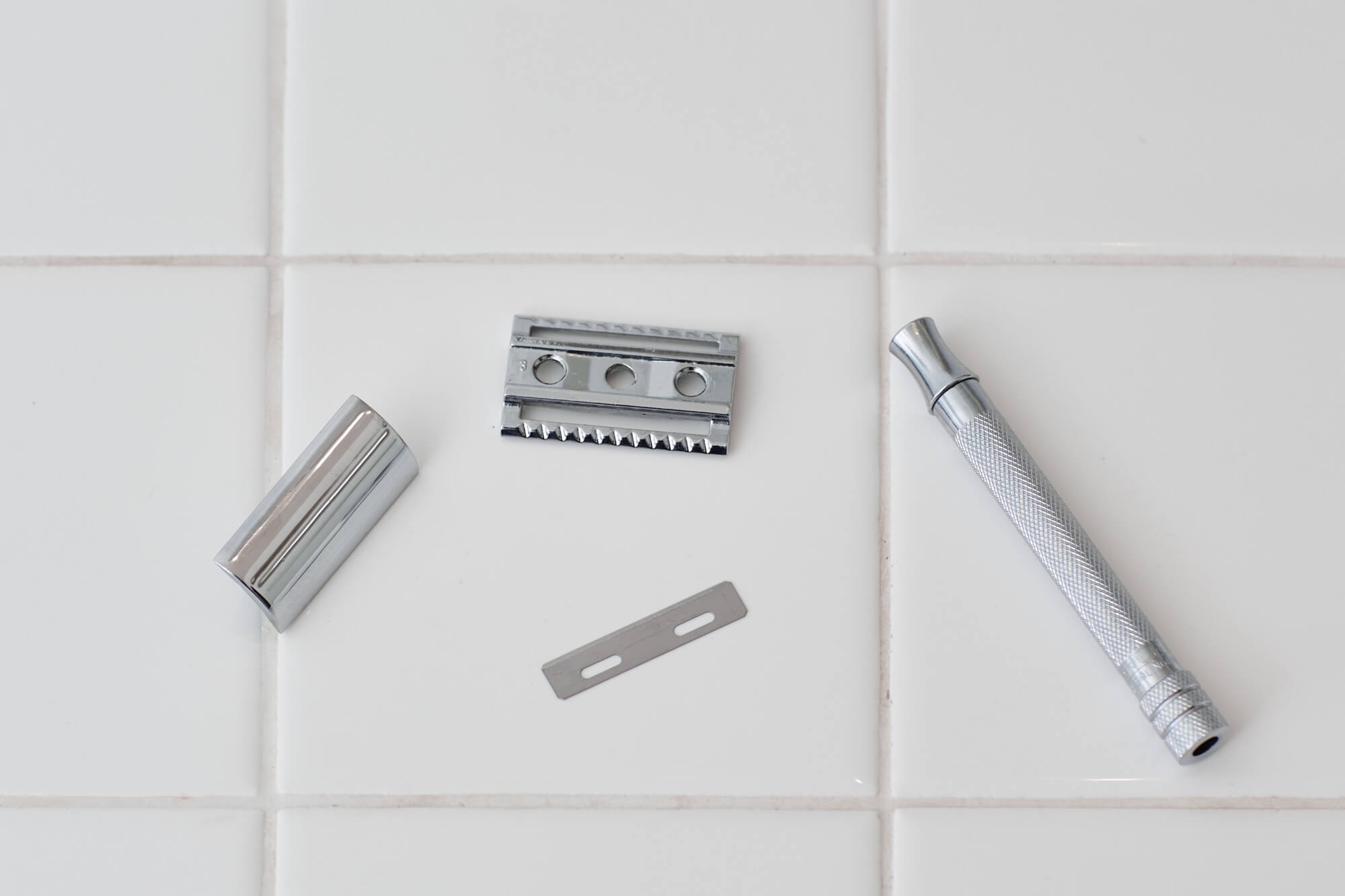
When French innovator Jean-Jacques Perret first pondered the concept of a safety razor in the 1760s, men were still shaving by candlelight in front of poorly polished metal mirrors, where they would predictably attack their earlobes nearly as well as they did their chin whiskers. Looking to limit the bloodshed, Perret added a simple wood cover to minimize the exposure of the blade, a basic concept that Gillette would enhance a century later when he looked to mass-produce a safer shaving razor.
Instead of just a wood shield over a straight razor, Gillette’s version was an entirely different model of safety razor that expanded on Perret’s initial concept. The new model came with three detachable pieces, a smaller and thinner stainless steel double-blade and a metal bar that limited blade exposure and provided much more control and safety.
Shortly after inventing the modern safety razor, Gillette began mass-producing affordable disposable blades at the beginning of the 20th century. The safety razors of today are all variations of the original design, including both the cartridge-style razors that use multiple blades within a disposable head and the classic double-edge razor that is the focus of this review.
Important features to consider
Everyone has a different idea of what they’re looking for in a razor, but several features tend to generate a bulk of the commentary and have an outsized effect on the overall outlook. Unsurprisingly, price and all-around value are the main drivers of opinion, although other features like handle design, blade exposure, loading style, guard design, and weight all are essentials in the conversation as well.
Handle length and material

Finding the right handle length is a balancing act that leads to different preferences for every shaver. The 4-inch long handle is standard with some of the most highly respected razors, although the classic early 20th century 3-inch models remain popular as well. Some manufacturers have created adjustable models, yet they have never really hit the mainstream — much like the 2-inch travel razors. There are also plenty of handles in the middle that don’t fall directly into either category.
As for materials, many manufacturers opt for the brass handle with a polished chrome finish, giving it an eye-pleasingly smooth look that is also designed to ward off rusting. Others prefer stainless steel, which is generally advertised as being less likely to chip than its chrome counterparts. Though less prominent than polished handles, matte finishes, as well as colorful glossy finishes, are not uncommon, specifically with upscale razors being marketed as modern takes on classic razors. While tubular handles are standard, we discovered plenty of creative handle designs, including specially designed cigar and barrel-shaped handles as well as handcrafted handles that combine elements from various razors.
Because the first safety razors users found out the hard way that wet handles can slip, different manufacturers have also tried an assortment of different ways to create the best grip possible. The typical solution was to create knurled handles with ridged patterns built right into the metal (or plastic), giving designers a chance to show some visual flair while also solving a practical problem of wet shaving. Even the top-rated synthetic plastic safety razors tend to have a knurled handle, although the texture can range from fairly rough to nearly smooth, with many different distinguishing patterns to separate from the competition.
Weight
The weight of a razor has a variety of ways that can impact the overall shave. While light razors can still provide a great shave, heavier razors are preferred by many because they let the weight actually do the bulk of the work. The more pressure that a shaver has to exert, the better the chance that more passes will be needed, increasing the likelihood of skin irritation. True to expectations, heavier models like the Parker – 99R and Edwin Jagger – DE89 did very well in overall ease of shaving, outperforming lighter models like the Merkur – MK 23C and Feather – Popular.
The weight is also a determinative factor of the razor’s point of balance, which is the typically the easiest way to find the best grip for a shave. Most safety razors are designed to balance on your pointer finger about an inch away from the head; for others, this can be slightly less than an inch. Once you find the balance point, securing the razor with your thumb is generally all you need to obtain a workable grip, which is why it’s particularly useful to find a razor that has a point of balance you prefer. Although it may not seem important to a safety razor rookie, the point of balance influences your shave — whether you notice it or not.
Guard design
Guard designs typically fall into four main categories: straight safety bars, slanted safety bars, adjustable guards, and open combs. Easily the most popular is the straight safety bar, which simply provides a straight buffer between your face and the blade. Within the straight safety bar, many manufacturers create a ridge along the bar for aesthetic purposes, a design usually referred to as “scalloped” or “microcomb system.” Designed for thicker beards, slanted safety bars can yield a slightly more aggressive shave, slicing at an angle down on your beard.
Also geared towards the thicker beards, open comb guards have small gaps in the bar — just like a comb — and let you put an additional amount of pressure on the edge of the blade. Lastly, the adjustable guard designs give shavers the ultimate freedom to choose their blade gap, although they tend to be high-end razors and fall outside the scope of this review. A few examples of adjustable heads include the Merkur Futur, Parker Variant Adjustable, and Rockwell 6C, among others.
Loading Style
Considering that convenience has been a crucial aspect of shaving since early man was using shark teeth and clamshells, a razor that doesn’t easily load can be a deal-breaker. One of the most popular loading styles is the butterfly open of a one-piece razor, which opens the razor head with a few quick turns of a knob handle (generally at the bottom). Butterfly razors, also commonly called twist-to-open, typically score high in terms of blade-loading convenience, although the drawbacks are an elevated chance of clogs and a harder time with cleaning.
On the other end of the spectrum, three-piece razors are an absolute breeze when it comes to cleaning out those hair holdovers. Even if it takes a few extra seconds to unscrew the handle from the two head pieces, well-made traditionally loading safety razors are still anything, but a problem when it comes to loading, and can even encourage good cleaning habits. At the end of the day, shavers typically have to decide whether they value the pure convenience of the butterfly or the old-school style and cleanliness of the standard three-piece razor.
Aggressiveness
Although a few different features will give clues about a razor’s aggressiveness, ultimately the perceived level of aggressiveness by the shaver is what is important. This is why quantifying a razor’s aggressiveness level can be very difficult, as the process is as much art as science and each shaver will experience the razor differently. Shavers who prefer mild razors usually like them because they are less likely to produce cuts or skin irritation, making them ideal for new safety razor users and those with sensitive skin. Razors on the aggressive side are designed to provide a much closer shave, which is why they tend to be favorites for experienced shaving enthusiasts and those with thicker beards.
Those looking to pinpoint a razor’s aggressiveness can focus on two important metrics to provide a basic guideline: blade gap and blade exposure. Although other features (e.g. weight, shaving angle) also contribute to the overall aggressiveness, determining the blade gap and blade exposure is essential to separate razors that otherwise might be very similar.
Blade gap

Even tenths of a millimeter between the guard plate and the blade can change everything when it comes to the way a razor shaves. While fairly mild razors like the Merkur – MK 23C and Feather – Popular land in the 0.61 to 0.64 mm range for blade gap, an aggressive razor can have a blade gap well north of one millimeter. The blade gap between the guard plate and blade also affects how easily you can clean up the razor after a shave, as larger gaps won’t collect plugs of stubble and shaving cream as easily.
Blade exposure
Even though the blade gap often gets more attention, the overall level of blade exposure is a more critical factor in how a razor shaves. Blade exposure is a measurement of how far the edge of the blade sticks out past the guard: Positive exposure means contact is possible on flat areas of your face, while negative exposure means the edge can’t actually touch without pressing skin past the guard.
As an example of this effect, the Maggard V3A head can put you at more risk of irritation and nicks than the Parker – 99R despite having a nearly-identical blade-to-guard gap of 0.89. That said, changing the angle you shave at changes where that edge lands, so a smooth, comfortable shave is still within your reach if you practice. If a razor is called “aggressive,” just think of it as a bicycle without training wheels. OK, maybe more like a dirt bike.
We included a basic rating scale from mild (limited exposure) to aggressive (maximum exposure) on the chart above to give you an idea of how these razors compare, but we decided to leave a more precise measurement of blade exposure parameters and definitions to other more enthusiastic razor reviewers. Note that some have tried changing blade exposure by adding shims above or below a blade to change where it sits in the gap, which is basically the same principle used in most adjustable razors.
The bottom line
For anyone intimidated by the prospect of switching from cartridge to a safety razor, the Parker – 99R is a classic-looking butterfly razor that promises a soft landing for both face and wallet alike. Rating well for both overall shave and value, the Parker is simple for beginners but aggressive enough for more seasoned shavers to get their money’s worth, making it a rare razor that can satisfy a host of different beards and shaving styles. While the Viking – Chieftain and Edwin Jagger – DE89 were also comfortable, convenient, and very good overall safety razors, the Parker – 99R stood above the pack as the clear top pick in its price range. Craving an even more exciting shave? Check out our straight razor review.
More Reviews
Oneblade - Core + Black Tie Kit
David Archy
Easton Marlowe
Johnny B - Mode
American Crew - Defining Paste
Philips Norelco - GoStyler
Wahl - PowerPro 9686
Panasonic - ER430K
Dyson Airwrap Complete Review: Is It Worth The Cost?
Dyson - Airwrap Complete
AquaBliss - SF100
Maxxima - LED Multi-Color


